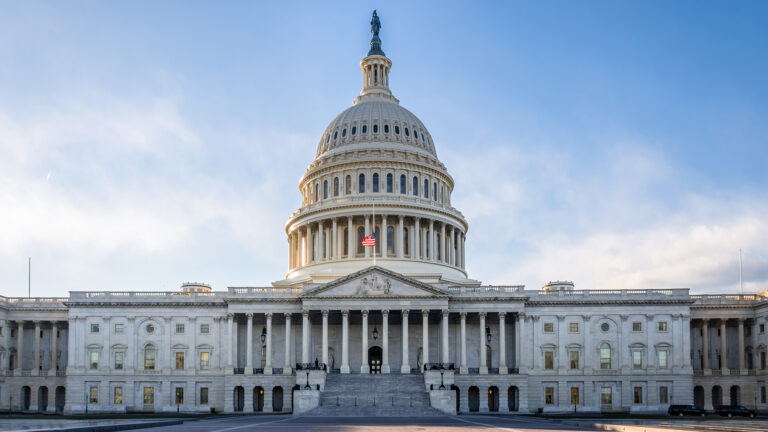By Christine Giordano
This story is a bit unusual and a bitinspiring. Turn-around stories are always of interest, especially when they areat a major airline during a time when planes aren’t flying. And when one hearsit in an investor’s own words, it’s even better.
But first things first: on November 15 at our10th Annual Southeast Institutional Forum in Atlanta, Ga., we will be inaugurating Jonathan Glidden,Chief Investment Officer of Delta Air Lines, into the CIO Hall of Fame. He’sbeen nominated by his CIO peers as a true thought leader and is one that hasinspired the industry.
Glidden’s story is that after working inendowments and foundations and earning his chops in the industry, he took a jobat Delta Air Lines when the fund was 38% funded in 2011.
Now half of the story is that Deltacontributed $10 billion. The other half is the investment team.
Due to their acumen, they raised the fundedstatus — meaning, even during the years of the coronavirus pandemic, whenplanes were not flying — they still raised Delta’s funded status to 101% from38%.
We’ll talk about just how he did that as wellas his views on pension risk transfers and derivatives.
We’ll get deep into the weeds on how he does whathe does and will try to learn all we can from him.
Christine Giordano – Markets Group
When you looked at the fund that you were about to tackle at 38% funded, what were some of the things that you notice that you decided to take immediate action on?
Jonathan Glidden – Delta
Sure. It’s not really my story, right? This is a this is a Delta story that is amazing. And I’m very honored to have been a part of through my career, I started well, after some time in the United States Navy. I spent some time in the endowment world with Emory, I spent some time in the private wealth world as well. And had this idea kind of fomenting in the back of my mind. Didn’t really want the job at Delta, exactly, I talked to a headhunter about it. And I was like, ‘Yeah, that that seems like a really difficult proposition.’ But I decided I would at least talk to Delta’s CFO and just kind of explain what I thought. Delta was in a really difficult position from a pension perspective. I said there are three things you can do. So like you mentioned, Delta’s funded status was in the high 30s. That made our unfunded liability about $13.5 billion. And at that time, the market cap of the company was probably around six or seven billion. I mean, this was big. This was a largeenterprise level challenge for Delta. So this guy’s name’s Paul Jacobson, and he’s the CFO at General Motors now. And I said, Paul, you’ve really kind of only got three choices: you can go all equity and you’re kind of rolling the dice and, there could be a second bankruptcy for Delta. You could immunize it. If you immunize the liabilities and you’re locking in $13.5 of pension debt that you’re going to have to figure out what to do with, you know, that’s years’ worth of EBITA for an airline back then. Or there’s kind of this middle ground,which is what I would recommend, and that’s really trying to achieve a more balanced beta profile, and really run a truly alpha-centric investment organization. But to do this, it’s not going to be easy, because it means we’re going to have to be as efficient with our capital as we can be. With every dollar of our capital, we’re really going to be trying to get some degree of beta exposure, and some degree of alpha exposure. And to do that, it’s going to be required to trade derivatives. And it’s going to be required to effectively lever the pension assets. And it’s going to be required to have a very alternative-centric portfolio, which is going to be pretty expensive in the grand scheme of things. So this was kind of the idea that I’d have my mind. And Paul liked the idea. One of the things about the Delta culture is their willingness to try things. Now, there needs to be a good thesis behind it, and you need to be able to define success, be consistent with that, and kind of build some guardrails around yourself. You need to state your expectations in advance, and you know, track whether or not things are working according to the plan.
Giordano
And so when you did start using derivatives, were there certain things that you were very cautious not to do?
Glidden
There are really two layers of risk management, once you make the decision that you’re willing to use some degree of prudent leverage — and to achieve that leverage through the use of derivatives in the name of building this more balanced beta profile. So you’ve got all the mean variance risk analysis that you can do. That’s one side of it, that everyone faces that and that still exists. But once you use derivatives, liquidity management becomes vital. So a lot of our derivatives, we generally don’t own stocks and bonds, we own delta-one derivatives on equity indices, or fixed income indices, that can be futures, that can be swaps. That can be repurchase agreements, that can be a wide variety, we’ll look for the most cost efficient way to implement our general beta exposures. So a lot of it is you need to think really hard about what’s in your beta derivative portfolio, and what a bad scenario looks like. Because the thing that comes with derivatives and comes with leverage is your exposure to margin calls. So you’ll have margin calls every day, maybe there’ll be inflows, maybe there’ll be outflows. And there’s just two cardinal rules: you need to preserve your intended beta at all costs, you need to be able to preserve your intended alpha at all costs. You know, thoseare the those are the two cardinal rules, if you’re going to use derivatives as a quasi form of leverage. So you’ve gotta be very thoughtful about how much cash you set aside. I’ve got a bunch of thumb-rules. So if you got an equity centric overlay, I’d say set aside 40% of the notional value of derivatives in cash. If you’re a little bit more fixed income oriented, maybe 25% is a better number. But these are just thumb rules. The stability of your plan sponsor’s earnings is meaningful as well. If I worked at a defense company, maybe I could run a little bit more aggressively. But I work for an airline — I think I work for the least cyclical airline — but the airline business is still a pretty cyclical business. Plus you need to try to figure out other sources of cash flow during very difficult scenarios. So that can mean tail hedging, that can mean equity option oriented strategies. It can also involve looking around your pension asset portfolio, and seeing what kind of collateralyou got around and if you can establish a line of credit on that collateral. Now that depends on what your interest rate environment is and that kind of thing. Long answer to a short question. Liquidity, liquidity, liquidity. Once you trade derivatives, you need to have a very thoughtful liquidity policy. And, you know, what is your escape plan and what’s your backup plan? You need such a strong focus on liquidity management.
Giordano
And how large is your team and managing this?
Glidden
I’ve got a six person team, there are four of us on the investment side, I’ve got a two person operations team as well. But we do work with quite a few strategic partners. I mentioned more balanced beta. And you know, that could look, maybe it’s got shades of risk parity, or again, maybe if you’re more peer sensitive, you want to have an equity focus, you pair that with equity tail hedging, the beta could look like that. The alpha really gets into a real focus on alternatives. And our portfolio, in some respects has been the same since I got here, which is will be about 25 to 30% private investments will be about 40%, market neutral hedge funds, we’ve got a DEI portfolio, now we do a little bit of LDI, we’ve always done a little bit ofrisk parity, we’ve got some inflation sensitive stuff. And then we trade this derivative overlay that’s really substantial. The notional value of our derivative portfolio has been 50, or 60%, of the value of the overall pension assets. To be an alpha centric shop, I mean, that it’s about the magnitude that’s required. Delta needed alpha. We still need alpha. That’s my job. That’s the job of a lot of CIOs out there. So, where I’m going with this, though, is, we have to be really, really good at privates, we need to be able to canvass the entire private world. It’s worth mentioning that Delta’s pension was actually frozen in the bankruptcy process back in 2006. So thinking about the duration of our assets, including the duration of our private assets, is very important. So I want to be as private as we can be. I’ve got some thoughts about that. But this involves having some capabilities in private equity, private credit, private real assets, primaries, secondaries, and co-investments.I did not have a mandate from Delta to kind of empire build to a sufficient degree to really staff up to do all of that. So we do have a strategic partner on the private side, on private manager selection, that helps us there, we also have a strategic partner on the hedge fund and the private credit side to provide support there as well. So it’s a bit of a hybrid governance structure, if you will. You’ve either got to kind of rent it or buy it. And, again, I don’t have the mandate to have a 20 person team. So we’ve got to use strategic partners to cover the world in a way that my modest team, but very talented team, cannot do.
Giordano
What is total size of your fund now?
Glidden
$15.3 billion as of a couple of weeks ago.
Giordano
I usually hear of a 16 person or an 18 person team covering a fund that size in the United States…
Glidden
That might be a more cost effective way to do things. But again, now we’re 100% funded now. We’ve been hard frozen since 2006. So it might not make sense for everyone. But you know, the structure that we’ve got it, it works for us.
Giordano
When you started to see the fund turn around, what were some of the moments that let you know that what you were doing was on the right course.
Glidden
So the balanced beta — that’s really just working with the plan sponsor to get an idea of their risk tolerance and their objectives. So just setting your strategic asset allocation. So I think most of us do that. But seriously, we are all about alpha. So we go through all of this, because I’m trying to beat indices by two or three percentage points, because that that’s what it takes when your funding status is so low. And ironically, maybe if we, if we would have just rolled the dice and went all equities, it may even turned out better than it did. But not only do we need like a balanced beta return, we need like 2% more than that. I mean, that is real alpha, we want alpha to contribute about 25% of our total volatility, the overall portfolio, it’s not an easy thing to do, because alpha tends to be pretty well diversified in most environments. So, some of the math: this is probably too many numbers for an interview kind of setting. We’re mostly fixed-income oriented right now to kind of somewhat match our liabilities, we do it all with derivatives, not really with cash bonds. So we say that we’ve got $7 billion of bond derivatives. And that’s pretty close to where we are. We set aside 25% of that in cash, the other 75%, we put in market neutral hedge funds. To have the derivatives, the cost of the derivatives is something like SOFR [Secured Overnight Financing Rate] — maybe SOFR plus a spread, plus or minus, somewhere in that range, it was a lot. Leverage was a heck of a lot cheaper for most of my time than it is today. That’s been one of the changes we’ve seen recently. But with my market neutral hedge fund portfolio, the whole goal is to beat my cost of borrowing by four percentage points. If you can do this, now your borrowing costs are going to cancel out. If I’ve got 75% of my assets, beating my borrowing costs by 4%, that’s going to give me index plus three percentage points. And that’s a big deal. Right. So now I’ve expressed what my expectations are. I think cone charts are a very powerful tool.Bridgewater was the first one that introduced me to the concept. But it’s, ‘what do you think your expected alpha is going to be?’ ‘How volatile do you expect that alpha to be?’ ‘And let’s track that through time.’ You’ve set your expectations is reality tracking along the lines of your expectation, and you can’t change the rules mid-game. And that’s an important part of the process as well. So, if reality is tracking close to our expectations, things are working, if not, things aren’t working. So that that alpha side is just huge. And I mean, did we ever have to disrupt our beta portfolio? Did we ever have to disrupt our alpha portfolio? We came close during COVID crisis. But you know, the answer to both of those questions is not over the course of the last decade. Set your expectations track versus reality.
Giordano
When the portfolio was threatened, what did you do instead?
Glidden
Yeah, so this gets to the COVID crisis, right? So we were actually pretty equity centric back then. So when we were equity-centric, we set aside 40 40% of the notional value of our derivative portfolio in cash. But we also ran an equity hedging portfolio, now, volatility is still pretty low. In those days, obviously, that changed as COVID kind of swept over the world. But you can find some pretty convex hedges, right? So I mean, if you invested a pretty modest amount, you probably make four or five, six times your money, we had two different strategies that we used in size back there. So one of them was just, you know, we bought put spreads. And, you know, we knew that that could detract from our returns over a long period of time. But we were hoping that it could provide a liquidity inflow in the event of like a real, real challenging period. Because we’re pension fund, we also have call options on certain parts of the yield curve. Because if interest rates go down, and you’re not fully hedged on the liability side, it’s bad for your funded status. Plus, we thought, we hoped that if there was like a real crisis kind of scenario, that rates could very well collapse, and you could make maybe even like five to eight times your money, very Vegas, very highly convex portfolios. I remember these numbers very well. We had $1.9 billion in margin calls between March 10th and March 19th of 2020. Equity markets went down 35% in five weeks. Now we set aside 40% in cash, right? So we did have enough cash set aside for it. But I mean, you start getting pretty thin, right? And so we’ve got green zones around our cash position, yellow zones, red zones around our cash position. But one of thethings that was hugely beneficial is that we had a billion dollars of inflows from those two hedging programs. It certainly was not like I could go talk to Delta’s management when our revenue was down 97%. I couldn’t go to the plan sponsor and say, ‘Hey, I need money.’ I’m the last person that they wanted to talk to, as we were going through that, so if you widen that timeframe, we had $3 billion of net margin calls from lateFebruary through late March, we had $ 4 billion of cash on hand to kind of offset that, or there abouts, we had $1 billion of inflows from our hedging portfolio. But I broke one of the cardinal rules. Now, I got a reprieve from that, but we actually submitted a more material redemption request to our hedge fund portfolio than I really wanted to, I didn’t want to do any. Because that tends to be a very good time, for it tends to be good. After a crisis beta tends to do well, and alpha tends to do pretty well also. And then I got bailed out by markets. I mean, we never got into the red zone from a liquidity perspective, the failure was that I needed to submit a redemption request for our hedge funds. Now I ended up getting bailed out, because we were able to keep our beta portfolio intact, and beta screamed higher. As soon as the Fed effectively came in and had their kind of ‘whatever it takes’ moment or ‘we’re going start buying whateverit’s necessary to buy to kind of stabilize the system,’ equities raced higher, we had a ton of margin inflows, I was able to rescind all of the redemption requests without them going through, but it was a technical violation of one of the one of the golden rules. So I talked about, you know, what, what collateralmight you have in your asset portfolio. So to prevent against something like that from happening again, we actually have a line of credit against our hedge fund portfolio now, that’s not fully drawn. So that’s about a billion undrawn there as well. I’ve done portable alpha, through the bursting of the tech bubble, through the financial crisis, through the COVID crisis. And you learn a little something different every time you go through it. But yeah, those were, those are white knuckle days. I mean, if equities would have been down another 10, or 15%, it would have been tough. So to talk about liquidity management, I’ve got scars, I just talked you through some, but it does make you better, I’m better at it than I’ve ever been.
Giordano
People are talking about this impending recession, interest rates are up. inflation’s up. What are you looking at now?
Glidden
One of the interesting things of fully funded pensions that are pretty far down a glide path to reduce your funded status volatility, is that we don’t really own a lot of equity anymore. Our expected return used to be 9%. Now it’s 7%. And with cash rates where they are, you don’t have to do Herculean things, to try to get to a 7% return these days. So our equity exposure is down to 20%. And two thirds of that’s private equity. Sowe have very little exposure to public equity today. In fact, other than treasuries and investment grade bond markets now, I’ve had plenty of margin calls there too, right? I mean, we own a lot of long duration treasuries, that’s been a difficult market, I do like the higher yields that are out there today. So from a Delta perspective, and this is all by design, but never again, in fact, our funding status in 1999 was 115%. So we’ve talked about the happy side of the story, you know, there’s a less happy side of the tale as well, which has gone from 115% funded to 38% funding. So never again, right, we learned that lesson, been there done that, it cost Delta $10 billion in contributions, and also 10% pension returns over the course of a decade to get out of that hole.It has some kind of nice parallelism, their contributions contributed about half of the improvement and the investment performance contributed about half of the improvement, which was which was great. But we’re not going to play that movie again. So you know, we’ve taken we’ve really reduced our volatility profile, and we’re not going to be held hostage by the vagaries of the public equity market. So from a big picture Delta perspective, it really doesn’t matter. And that’s by design. We’re still 30% private, we’re still 40% market neutral hedge funds. Our derivative portfolio is mostly kind of liability hedging, our hedge ratio,and we still have some optionality in there because I do care about total returns as well. We lost 12% in 2022. And while maybe that was pretty good from a peer relative perspective, I don’t like losing money. So to one degree, my Economic pontifications don’t matter, and that’s by design. And it’s not a bad story either, because we try to really make our value through bottom up manager selection. But as we think about what’s going on in the world, I’m glad that Delta is in the position that we are, I’m glad we got our funding status, up to 100%. But yeah, there’s a real chance that for the first time in a generation, that inflation volatility is going to be a pretty meaningful driver of asset prices and investment returns. And that means, and Iknow people have been saying this for forever, and I’ve probably been saying about for forever, myself, that, an equity dominated portfolio to include 60/40, you know, whose risk is dominated by equity, you know, the ride probably isn’t going to be as pleasant as it has. At least when you think about equity risk premium in terms of how much are equities likely to outperform bonds by over the course of the next 20 or 30 years? The soft answer, but I think it’s going to be by less than what we’ve seen, coming since the 1980s.
And that’s got that’s got real implications if you can’t lean on the equity risk premium, quite as much as we’ve been able to in the past. Then what do you? This is why I wanted a better balanced beta anyway, is to be in a better place on that growth and inflation, two-by-two matrix. So I think equity risk premium is going to be a little bit less generous than it has been. You know, the nice thing is bond yields look pretty decent right now. But I think the ability to really drive meaningful alpha is still going to be very important. You know, there’s a lot of things that I could talk about, you know, on the economic front. There’s a lot of fairly scary things going on from you know, kind of a government populist, protectionist kind of way that could mean, there’s a little bit less of a focus on economic growth. And it seems like there’s a little bit less of a focus on productivity growth which I think ultimately leads to improvements in quality of life. So, you know, we had an nice peace dividend –it depends on your perspective, of course – but financial markets had a nice benefit from outsourcing as well. So we might see some of that, you know, backup. So, you know, there’s reasons to be, there’s some additional reasons to be concerned about what economic growth could look like, what you know, asset returns could look like, and what the dynamism of the global economy could look like. So, it just means that, you know, continuing to operate with as broad of a tool set as you can, I think, is extraordinarily important, I don’t really plan on making a ton of changes to what we do. We want to have our economic exposure primarily through private markets, private equity, private credit, private real assets, we still do venture but not a ton, because again, we’ve been frozen for as long as we have been. So try to squeeze a little bit of an equity risk out of an illiquidity premium. And try to squeeze as much as you can out of workingwith skilled managers that have multiple ways to impact what the returns are going to be in like market neutral hedge funds, because they’ve got about the best breadth that you can have in terms of, you know, almost kind of go-anywhere-and-do-anything as long as there’s honest to goodness hedging in place. So I’ve probably done a lot of hedging around my answers on economic outlook, those are those are some of my thoughts anyways,
Giordano
When you look at your co investments, are there are areas that you’re particularly interested in, I know, Basil 4 is about to change things up in Canada, they’re talking about the offloading of certain assets in this economy. Are there niches that you find fascinating, given your economic background?
Glidden
Yeah, so we do co investments across the spectrum. So we’ll do private equity co investments, we’ll do private credit co investments, we’ll do private real asset co investments. And that means real estate co investments, infrastructure co investments and energy transition co investments. So now it’s maybe the worst most common answer I can give you. We try to be pretty diversified in what we do in our co investment portfolio iswell, you know, it’s, there’s a couple of things that are meaningful. But I mentioned that one way to think about it, it’s a way that I kind of like, is maybe you should be about as private as you can be, but no more private than that. Well, how do you figure out how private that is? I think your spending rate is very important. So we have a high spending rate. It kind of varies between 7% and 8%. I like my thumb rules, likeI mentioned, so you one minus 10 times your spending rate, I don’t think that’s a bad proxy for how private you can be. Our spending rates, again, are around seven. So that would equate to a spending rate illiquidity private exposure of about 30%. That’s kind of where we are today. But one of the reasons I think we can becloser to 30 than closer to 20 is because we do these things that shorten the duration of our private portfolio. That’s why we do private credit. I’m very sympathetic for people that say why, if you’re going to do privates at all, just go with the highest expected return and just load up on private equity and venture capital. I’m very sympathetic to that cause. But you know, one part of the answer your question is, we try to run a very diversified co investment book. I guess, where I was going with all of this is of our 30% allocation to privates. We are, we’re 50% primaries, 30% secondaries and 20% co-invest. So that’s pretty meaningful, we got 6% of the overall value of Deltas pensions are in co invest. So we try to be pretty diversified around what we do.But now is you is you got to think about things, though, Delta put $10 billion into the plan, we’re now fully funded, maybe even up to 101%. funded, we’ve reduced our expected return on assets from 9% to 7%. And again, with money markets, where they are, we’re talking cash plus 1.5. I mean, that’s a very, it’s a very different investment problem, then, then then where we have been historically. With as many assets as we’vegot in private markets, that’s a tremendous amount of data that we’re sitting on. I mean, the market cap of Delta’s still floating around 25 billion, I’ve got 15 billion on the DB pension side, there’s got to be a better way to harness some of that data. We invest with some of the best GPs in the world. There’s some interesting conversations there, those GPs, in turn, invest in some great entrepreneurs and business owners. So in a way that fits within our asset allocation, which is crafted to be as fiduciarily responsible as we can be, I think there is an opportunity to look for Win-Win situations, right? To look for the overlap in the Venn diagram of great investments that we’re going to be doing anyways. But that also fit within some of the strategic initiatives of the plan sponsor. And for Delta, you know, this is sustainability, this is DEI, this is innovation. Those are probably the three that come to mind. So maybe we’ll have some success, maybe we won’t have any, but how can we harness some of the data and some of the investments that we make on the pension side in a way that’s very consistent with our strategic asset allocation, that meets all of our return requirements that could additionally have some tangential benefit to making Delta a better company? So we do look at sustainability. We’ll look at sustainable aviation fuel. We look at decarbonization of aviation. We look at all of these kinds of things in terms of innovation. Christine, I’m sure you’ve flown on plenty of planes, hopefully brought a few of them in Delta planes. It’s not always the best experience right? From the time you leave your sofa to the time you get through tough traffic, you’ve got to park, maybe that means a shuttle or a long route and you got to schlep all your stuff. And then you got to go through TSA, and then you got to navigate an airport, you know, it’s not the best. It’s not the best experience. So how can we deconstruct elements of that? And is there a way that technology can play an answer and in making travel have a more pleasant experience? Is in some of the things we look at performance comes first, alpha comes first, the fiduciary responsibility to Delta’s beneficiaries absolutely becomes first. Those are some of the things we’re trying to take a little bit of a different look at.
Giordano
And, okay, so you’re 100% funded, maybe 101%. It’s been a record year for PRT pension risk transfers, where you would transfer some of your funds or all your funds to another entity to offload the risk. But you have different views about that. What is your theory around it and how are you approaching PRT?
Glidden
Yes, I do have different views. But in one way, I approach this the same way I approach it approach everything else and that is, ‘what is the universe of alternatives that are available on how to move forward for pension and state.’ I’m gonna say that there’s three, I’m sure there’s more than that. But you know, one thing you cando is you can do a PRT, that’s certainly one. Or you can do some shades of PRTs, be it some lump sum offers small balance annuitization, or terminated lump sum, some kind of offering somewhere around there. You can hibernate on your balance sheet. And that’s another thing that you can do. But increasingly, I think that, you know, there’s a Third Avenue that’s opening up as well. JP Morgan has been talking about this… But what if you just kept the assets on balance sheet, really, really ratcheted down your funded status volatility, and tried to outperform your liabilities, you know, and tried to outperform your liabilities by a point or two per year. In some of the gory details of Secure 2.0, there are clauses in there that make it more possible for companies to do something with excess funds above 110% funded status. One of those alternatives is section 420 transfers. But you know, there’s additional ways to use some of the excess funding without triggering super onerous excise taxes as well. Every organization is going to be different. So this is something that can make sense. Maybe it makes particular sense for Delta, because Delta has material, unfunded healthcare-related liabilities on our balance sheet, we’ve got a VEBA trust, that’s, that’s largely unfunded. And you know, as Delta went through the survival process going through COVID, — and I love Delta, Delta is such a huge part of this story, I’m not having this conversation, if it isn’t for the Delta difference, in Delta people trying a little bit harder to provide a good travel experience, and some good stewardship in terms of capital allocation, and discipline and being willing to try something a little bit different. Delta is one of two airlines in the world that did not lay anyone off during COVID. So I’m very humbled when I walk into the building. I mean, a lot of the people that that that I work with are just amazing, amazing human beings. Part of the way that we got through COVID, the way that we did was through an early retirement program. So the big inducement for the early retirement program were our health care accounts, so this is 100to $150,000 depending on your level, your tenure with the organization. This all unfunded, right? So the offer was to go retire at your retirement age, if you start racking up healthcare costs, just send us the bill and we’ll take care of it. That’s $1.5 to $2 billion of unfunded healthcare liabilities in the future. There’s legislation now with some limits and they’re still some hashing out that’s going that Delta might be able to use some pension overfunded when we get to a very overfunded status, and we got a very low funded status volatility. Maybe we can use some of that excess funding without excise taxes to satisfy some of the other unfunded healthcare related liabilities. And then there’s always another oldie but goodie out there, right? This is true of the industry: we want to protect people’s retirements and we want high quality retirements. We want retirement with dignity. Even though the plan has been frozen for a long time, how about increasing the benefits? Our industry has come an awful long way with risk management. If you can get your funded status volatility down to about 5%,and you think you’ve got a pretty good chance over time to beat your liabilities by a point or two per year, you can increase benefit payments to your beneficiaries to ensure a higher quality retirement. I still think Delta has learned a lot. We went from 115% funded to 38% funded. That’s because we ran with equities too high with a 60% allocation to equities. And we’ve learned our lesson, the industry, I think, is learned its lesson. I think there is real value to over funding a pension, and trying to figure out how you can use that over funding to benefit both the pension beneficiaries, and all employees across the company. Every company is going to be different, but just know that there’s multiple avenues out there. And that’s increasingly so with some legislation that’s been passed, you know, fairly recent. So you got to do what’s best for you. But there are options out there.
Giordano
You’ve been active with the legislature. Can you talk about some of the changes that you’ve been advocating?
Glidden
Well, it takes a village. So happy to work with CIEBA, that’s the Committee on the Investment of Employee Benefit Assets, to really think about, how can we provide better quality retirement for our employees? And, you know, there are a lot of aspects to that. I would love to see, with all of the learning that has happened with corporate pensions, I would love to see them stick around for a while. And I know the ships have already largely sailed, but [consider] even terminated employee lump sums, right? You know, that’s a lot of assets that go out the window. I would love to kind of see that stay in place. Why are so many other companies closing and freezing their plans? They’re doing it for a variety of reasons. They’re doing it because of earnings volatility that, that it creates for cashflow volatility that it creates, PBGC fees is a big driver of this as well, as you kind of go through some of that math, that’s where small balance annuitization can start to look very attractive. So are there steps that can be taken legislatively to make it a little bit easier for corporations to keep pension assets on balance sheet? To continue to make investments in privates and to drive innovation, and to make the US economy and economies around the globe, a little bit more dynamic. I love our defined benefit plan. It’s much more dynamic than our 401 K plan, which can be a different conversation there as well. But how do we make it easier for corporations to hold on to their pensions? Well ,it gets down to how can we improve the visibility of what the cash flow requirements are? Is there anything we can do on the PBGC front? So we’re in a situation where the single employer plan for the PBGC is very well-funded. And the improvement in funding status is not just a Delta story, the average funded status across corporate pension plans today is 103% funded. It’s first time it’s been over 100% since 2007, that was a bad story. That’s pre financial crisis. The industry has learned a lot though. Everyone was 60% equity. Now we’re 30% equity, it’s a lot different situation. But is there a way that we can make PBGC premiums a little bit less onerous? Now that funds are over funded, and substantially de risked? You know, the funding status volatility of our industry is so much lower today than it has been. So is there anything that we can do there? You know, there’s also a kind of a quirky situation with this spike that we’ve seen in interest rates. And this could be true for Delta ,where there might be mandatory contributions into fully funded plans, where that’s a difficult one to explain.
So the funding rules are set by Congress, and that’s something that’s changed six times since the passing of the Pension Protection Act back in 2006. So you know, this is something that has been changed because there’s a 25 year look back period, and there’s multiple segments and there’s corridors around these segments and floors and corridors around the floors. There’s asset smoothing and there’s a lot of different levers. So is there a way to mitigate it to kind of position some of these levers in away that’s going to result in a more rational, required contributions, or maybe not having required contributions into over funded plans. And continue to have more options for what to do with excess funding. So if you’ve got an overfunded VEBA, can you shift assets from an over funded VEBA into an underfunded pension or vice versa, subject to guardrails, of course, subject to safety buffers ,subject to a lot of this kind of stuff. And then litigation protection on the401k side would be great. I think litigation has been good up to a point to make fiduciary committees really, really focused on their fiduciary responsibilities. I think it’s been a force for the general reduction in fees, for traditional long-only investment managers. But at a certain point, there are a lot of nuisance lawsuits out there. So it’d be great to get some protection. Defined benefit plans, if you try to make it as apples to apples, have outperformed target date bonds and have outperformed401 K participants average experience, is there some way to take some of the learning we’ve got on the DB side, but apply it in the DC side? Delta’s 401k plan is about $30 billion. So we’re top 15, top 20. We have been sued once; if your big, you’re going to be a target for a lawsuit. So is there anything we can do? Fiduciary responsibility is absolutely critical, no one wants to get out of any fiduciary responsibility. But companies and fiduciary committees I think, are rightly worried about doing anything that could increase the probability of litigation. So, you know, some degree of litigation is completely warranted and helpful. But I think we’ve gone way past that tipping point. Is there a way we can get some privates into 401 K plans. We’ve only got 15 billion on the DB side, 30 billion on the DC side, we’re emblematic of what’s happening in the industry as well.
DB plans, I think, have been a source of economic growth for our country because we invest with venture capital funds, private equity funds, and yet we’re not getting that out of the 401 K plan. So not only do I think we can serve our participants better, I think we can, I think we can actually make an impact on economic growth, and productivity and quality of life.
Giordano
Is there anything that you might offer as advice to a new CIO, who has perhaps just taken a role?
Glidden
Find people to argue with, but I should probably call it constructive conflict. And there are a variety ways to do this. We’ve got I’ve got at least three layers here. So, as you’re building your internal team, you know, look for diversity. In this is diversity of thought, this is diversity of background. This is you know, diversity of life experience. You want people that argue with you. Being a CIO doesn’t mean that you get and definitely shouldn’t mean that you get everything your way. I’ve got a fantastic team, even if we are small but mighty But Amanda Cogar is my deputy CIO. She is great at either arguing or playing devil’s advocate. DmitriyVoronkov is my Chief Operating Officer. Our portfolio has some complexity to it, he’s behind everything, which is great. But then, we do have our strategic partners as well. I think right strategic partners should push you or challenge your views. Ultimately, you’ve got to do whatever it is that you think is best for your getting what fits within your governance. That’s important and then you go argue with your managers right I mean, you’ve got to have a thesis but you need to fire test your thesis. You want to find as many people that disagree with you as you can. And look I thought I have reasonably thick skin coming into this.
I’m a way better CIO than I was 10 years ago because I’m not nearly as stubborn as I used to be. I’m not usually I listen way better, I am more flexible, again, it’s still better balanced, beta, better alpha, have great people to argue with you. It’s got to be constructive conflict. And it requires some management, that constructive conflict and diversity at your team and with the investment professionals that you work with.
Giordano
And you took a role in one of the most volatile industries. What, what experience over the course of your career over the course of your life best prepared you perhaps, for your role today?
Glidden
I’ll try to give you the short version. I grew up kind of middle class, Newport News, Virginia. My dad was enlisted in the Navy, my mom was a stay at home mom. Didn’t have a ton of money around. So I ended up taking a four year Navy ROTC scholarship to go to Georgia Tech where I was mechanical engineer. Then I spent six years in the Navy as a naval officer. And then I got my MBA, spent a little bit of time at University of Chicago after that. Then I worked with Emory University’s endowment fund. So you know, other than, just kind of an internship here, there and just being addicted to personnel investing, I didn’t have I didn’t have much of a background for this. So you get a great learning environment to go to an endowment, much less than one that had a pretty substantial single stock concentration when I joined, and actually was able to substantially diversify the portfolio. So we had it wasn’t exactly a clean sheet of paper exercise, but it was close to it. It was like here’s a billion dollars go build a hedge fund portfolio.. Emory’s director of public markets back then, and a guy named Matt Wright, who runs his own OCIO shop, to go build it. What a great experience. So the entrepreneurial spirit that exists at an endowment that was a big deal. In the Navy, I was a Tomahawk missile officer on my first ship, I was a boardings and weapons officer on my second ship, spent a lot of time in West in coastal Africa, spent a lot of time in the Adriatic, when Yugoslavia was kind of falling apart. You know, I’ve been in a lot of really crazy places. A lot of that job is: you’ve got to keep everybody together. And you’ve got to think about morale. But you’ve got to tell consistent stories, you can’t have a different story every day, you’ve got to keep everyone involved, you’ve got to make people feel that they’re valued. So, you know, I’m writing $1.9 billion of margin calls in nine days and I actually have COVID at the time, you’ve got to rely on your discipline, right? You’ve got to have it, you have got to have everything set up. You’ve always got to strive to be better. And I mean, there’s nothing better than that, the time that I was blessed to spend as an officer in the United States Navy.
Giordano
Wow. Well, on that note, thank you, Jonathan Glidden, CIO of Delta Air Lines. And our, we are honored to be able to give you a Hall of Fame Award for all that you’ve done for the industry, as well as your company, as well as improving our morale as an inspiration. Thank you very much.
Glidden
On behalf of Delta, happy to accept thank you so much, Christine. I’ve really enjoyed it. Appreciate it.












